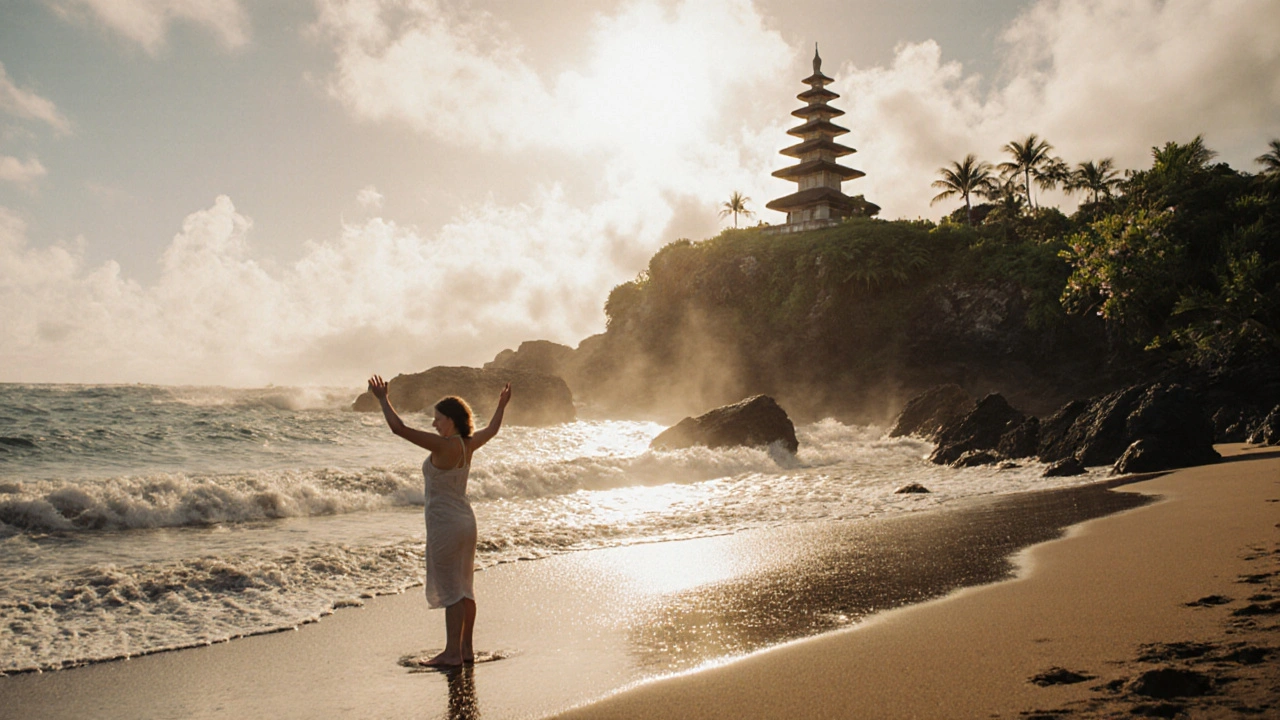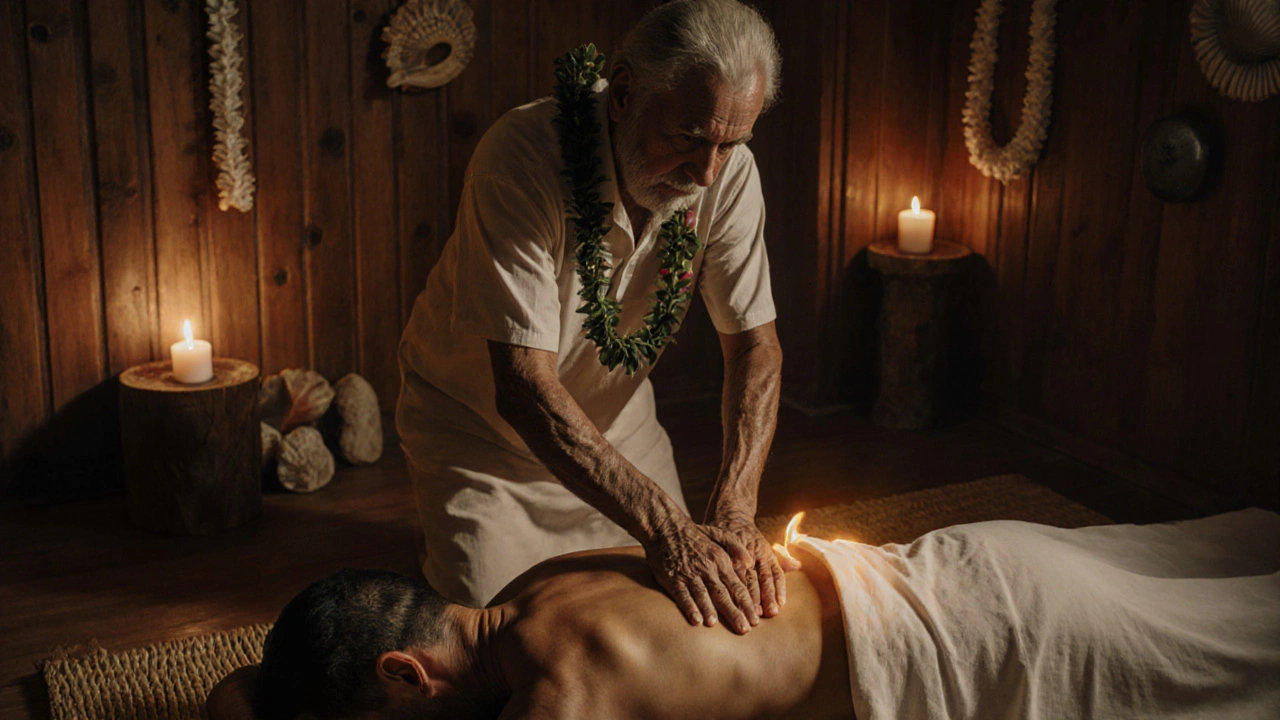Kahuna: A New Era in Spiritual Practices
 Nov, 15 2025
Nov, 15 2025
For centuries, the islands of Hawaii held secrets that outsiders rarely understood. Among them was the role of the kahuna-a spiritual guide, healer, and keeper of ancestral knowledge. Today, as people search for deeper meaning beyond therapy sessions and meditation apps, the ancient practices of the kahuna are making a quiet but powerful return. This isn’t about exotic rituals or tourist shows. It’s about real, grounded ways of healing that work with nature, energy, and the unseen forces that shape our lives.
What Exactly Is a Kahuna?
A kahuna isn’t just a healer or a priest. In traditional Hawaiian culture, the term refers to a master in a specific field-whether it’s medicine, navigation, farming, or spiritual work. The word itself comes from "kahu," meaning to care for or guard, and "-na," indicating expertise. So a kahuna is someone who guards and practices deep knowledge.
There were different types of kahunas. The kahuna la’au lapa’au focused on herbal medicine and physical healing. The kahuna hōʻike worked with visions and prophecy. The kahuna nui was a high priest who oversaw rituals and maintained the spiritual balance of the community. These roles weren’t chosen by ambition-they were passed down through training, lineage, or divine calling.
What sets the kahuna apart from other spiritual traditions is how deeply connected everything is. Healing a broken bone wasn’t just about herbs. It involved prayer, breathwork, energy alignment, and restoring harmony between the person and their ancestors, the land, and the ocean. There was no separation between body, mind, spirit, and environment. Everything was one system.
The Lost Art of Ho’oponopono
One of the most well-known practices tied to kahuna wisdom is ho’oponopono. Often reduced to a simple mantra-"I’m sorry, please forgive me, thank you, I love you"-this practice is far more complex than modern interpretations suggest.
Originally, ho’oponopono was a family-led reconciliation ritual. When conflict arose, elders gathered everyone involved. They spoke honestly, released blame, and restored harmony through prayer, song, and shared food. The goal wasn’t to fix the other person. It was to clean the inner space of the person speaking. The belief was simple: if your mind is filled with anger or guilt, your body and relationships will reflect that.
Modern versions skip the community aspect. But the real power of ho’oponopono lies in its return to responsibility. You don’t blame your boss, your partner, or your past. You look inward. You ask: "What part of this is mine to release?" That shift-from external blame to internal cleansing-is what makes it timeless.
Kahuna Energy Work: Lomilomi and Mana
Many people associate kahuna practices with lomilomi massage. While lomilomi is a form of bodywork, it’s not just deep tissue or Swedish massage. It’s energy movement. Practitioners use long, flowing strokes that feel like waves. Their hands don’t just touch skin-they follow the flow of mana, the life force that Hawaiians believe runs through all living things.
Mana isn’t mystical. It’s measurable in effect. People who receive lomilomi often report feeling lighter, calmer, and more connected-not just physically, but emotionally. That’s because the technique doesn’t just relax muscles. It releases stored tension, grief, and fear held in the body. Many who’ve tried it say it’s like crying without tears-emotions surface and dissolve without words.
Unlike massage therapists who follow a checklist of pressure points, kahuna practitioners tune into the person’s energy. They might pause mid-stroke, change rhythm, or hold a spot longer because something in the body "spoke." This requires years of training and deep listening-not just to the body, but to silence.

Why Kahuna Practices Are Resurging Now
It’s 2025. People are burned out. Therapy apps are oversaturated. Mindfulness has become a buzzword. And yet, the rate of anxiety, depression, and disconnection keeps climbing.
Kahuna practices aren’t trendy. They’re rooted. They don’t promise quick fixes. They ask for presence. That’s why more people-especially those tired of spiritual consumerism-are turning back to them.
Unlike yoga studios that sell crystals and affirmations, kahuna work doesn’t require you to buy anything. No expensive retreats. No subscription fees. Just quiet time, honest reflection, and connection-to yourself, to nature, to those who came before you.
It’s also resonating because it’s not about belief. You don’t have to "believe in mana" to feel its effect. You just have to be willing to slow down, breathe, and listen. That’s something anyone can do, anywhere.
How to Begin Practicing Kahuna-Inspired Spirituality Today
You don’t need to fly to Hawaii to start. You don’t need a teacher. You just need to begin.
- Start your day with five minutes of silence. No phone. No music. Just sit. Notice your breath. Notice what comes up.
- Practice ho’oponopono daily. Say the four phrases aloud, not as a chant, but as a question: "What am I holding onto that’s not mine?" Then let it go.
- Walk barefoot on grass or sand for ten minutes. Feel the earth. Don’t think. Just feel.
- Write a letter to an ancestor-real or symbolic. Thank them. Ask for guidance. Don’t send it. Burn it or bury it. Let the act be the ritual.
- Stop trying to "fix" yourself. Instead, ask: "What is this feeling trying to teach me?"
These aren’t techniques. They’re invitations-to slow down, to reconnect, to remember you’re part of something older than your worries.

Common Misconceptions About Kahuna Practices
There’s a lot of noise out there. Books that call themselves "kahuna secrets" are often written by people who’ve never stepped foot in Hawaii. Some sell "kahuna initiations" for hundreds of dollars. Others claim to channel ancient spirits.
Real kahuna work isn’t for sale. It’s not about power. It’s about service. The old kahunas didn’t charge for healing. They accepted offerings of food, time, or labor. Their reward was balance-the knowledge that harmony had been restored.
Another myth: that kahuna practices are only for Hawaiians. That’s false. The wisdom belongs to anyone willing to learn it with humility. But you can’t take it without respect. That means learning from authentic sources, not Instagram influencers. It means understanding that this isn’t a costume or a spiritual accessory. It’s a living tradition.
Where to Find Authentic Resources
If you want to go deeper, look for work by Native Hawaiian teachers like Dr. Mary Kawena Pukui, who preserved chants and oral histories. Or seek out the teachings of the late Dr. Lilikala Kame’eleihiwa, who wrote extensively on Hawaiian cosmology. Books like Hawaiian Medicine by Dr. Samuel M. K. Kamakau and The Kahuna Way by Max Freedom Long (though debated, still a historical reference) offer insight.
Look for programs offered by Hawaiian cultural centers-like the Kamehameha Schools or the Bishop Museum-where knowledge is shared by those who carry the lineage. Avoid anything that promises enlightenment in a weekend or sells "kahuna certificates."
The Real Gift of the Kahuna
The kahuna tradition doesn’t offer you a new belief system. It offers you a way to come home-to your body, to your breath, to the quiet wisdom that’s always been inside you.
In a world that moves too fast, the kahuna reminds us: healing isn’t something you do. It’s something you allow. It happens when you stop fighting, stop fixing, and start listening.
That’s not new age. That’s ancient. And it’s still alive.
Is kahuna spirituality the same as Hawaiian religion?
No. Kahuna practices are part of Hawaiian spiritual tradition, but they’re not the same as the full religious system. Hawaiian religion includes worship of gods like Kāne, Kanaloa, and Lono, with specific rituals, temples (heiau), and priesthoods. Kahuna were experts in specific areas-medicine, prayer, navigation-and often worked within that religious framework, but their role was more practical and hands-on. You can practice kahuna-inspired healing without following the full religious structure.
Can anyone become a kahuna?
Traditionally, becoming a kahuna wasn’t a choice-it was a calling. Training lasted years, often under a master, and involved deep spiritual preparation, fasting, and learning chants and rituals. Today, people can learn kahuna-inspired techniques like ho’oponopono or lomilomi, but calling yourself a kahuna without lineage or deep cultural training is seen as disrespectful by many Native Hawaiians. You can practice the wisdom, but you don’t inherit the title.
Do kahuna practices have scientific backing?
Some aspects do. Studies on mindfulness, breathwork, and somatic release show benefits for stress, anxiety, and chronic pain-core elements of kahuna healing. Lomilomi massage has been shown in clinical settings to reduce cortisol levels and improve sleep. Ho’oponopono’s focus on emotional release aligns with modern trauma therapy. While the energy concepts like mana aren’t measurable by science, the effects on well-being are real and documented.
Are kahuna practices safe?
Yes, when practiced with respect and awareness. Lomilomi massage is gentle and safe for most people. Ho’oponopono is a mental and emotional practice with no physical risk. But if you’re dealing with trauma, depression, or chronic illness, don’t replace medical care with spiritual practices. Use them as complements. And always choose teachers who honor Hawaiian culture-not those selling quick fixes or spiritual products.
How is kahuna spirituality different from Reiki or energy healing?
Reiki comes from Japan and uses specific hand positions and symbols. Kahuna energy work, like lomilomi, flows with the body’s natural rhythm and doesn’t rely on symbols or attunements. It’s also deeply tied to place-land, ocean, ancestors. Reiki is portable. Kahuna healing is rooted. One works with universal energy; the other works with the specific energy of a person, their lineage, and their environment. They can complement each other, but they’re not the same.
Start small. Stay curious. Don’t rush. The kahuna way doesn’t hurry.
